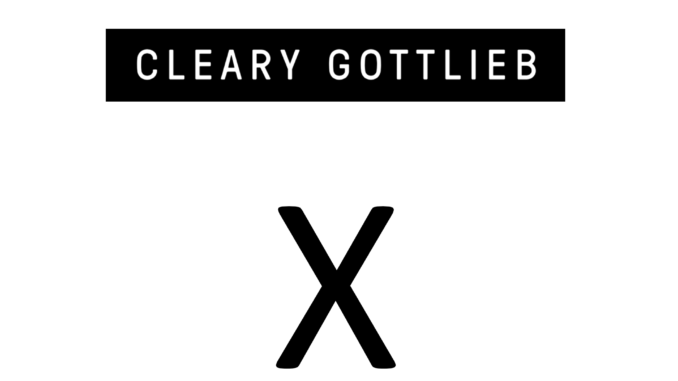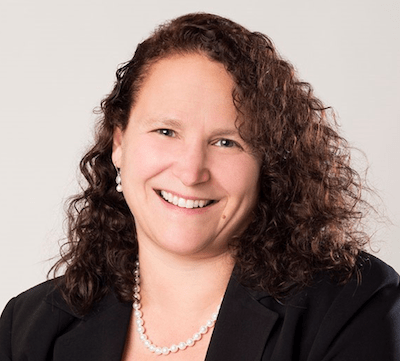
‘Big Law is struggling to retool the factory, so we will build a whole new factory,’ explained Carla Swansburg, CEO of the soon to formally launch Cleary X – a special business unit created by elite New York law firm Cleary Gottlieb to handle efficiency-focused legal work.
Cleary X, which is rapidly hiring staff now, will initially focus on transactional process matters, such as M&A due diligence, and will tap NLP review tools to produce the needed efficiency.
Swansburg (pictured below) told Artificial Lawyer that the Cleary X group, which is structured as a Canadian company and will formally launch in ‘late Spring’, will operate with a remote and distributed staff internationally.
It will also have a lot of freedom to develop its own business model, with its own pricing system. This could include operating beyond the billable hour. Offering Cleary X’s services to other, perhaps smaller, law firms was also a possibility.

While M&A is a starting place, they may then move into other transactional areas, such as finance and real estate. This will also be a data-rich environment and the group will develop a range of analytics to support their work.
Swansburg, who is based in Nova Scotia, noted that they won’t be building their own tech for this NLP review work, but will bring in solutions from well-known legal tech suppliers.
This all sounds very positive. But, perhaps the bigger and more strategically important question for the US legal market is: why is an elite ‘White Shoe’ firm such as Cleary doing this? Unlike in the UK, where the ‘Magic Circle’ has embraced plenty of transactional legal tech and in some cases built their own dedicated process groups, many of New York’s finest have avoided going down this efficiency-paved road, outside of their eDiscovery needs.
It’s always been assumed that this was simply because there was no client pressure, nor enough partner interest, to really change things with transactional legal work on Wall Street. And yet……here we are with Cleary X, which suggests all is not so monolithically stable as it seems in Manhattan’s legal village.
Moreover, Cleary has also invested in legal tech startup 10BE5, which grew out of the firm. Things really are evolving.
‘Some of the firm leadership saw that things are changing,’ explained Swansburg. ‘Some Wall Street firms are behind the UK firms, and firms in Canada.’
‘I have a lot of sympathy for Big Law, but it’s hard to make changes. So, what Cleary has done is to re-imagine legal services, but not disrupt what we [i.e. the main firm] does.
‘Big Law is struggling to retool the factory, and it’s hard to bring new tech and skills [into that model], so [the idea is] we will build a whole new factory, with new leadership, and we will figure out how we do this.’
Swansburg added that expecting Cleary lawyers to use their ‘non-existent free time’ to remake how the firm worked was not realistic. It made more sense to build a whole new vehicle. They can tap the subject matter expertise of Cleary when it’s needed, but the review and data analysis work is what Cleary X will focus on.
She added that looking more broadly at ‘high volume recurring transactions’ was of interest. This would be matters that are complex, but are often repeated.
‘We can build programmatic approaches to transactions and then we can scale those,’ Swansburg said.
Overall, this suggests that the world of process, efficiency and the business models of ALSPs and law companies, is manifesting itself here, and through a firm where one would normally not expect such ideas to be supported, let alone lead to the creation of a whole new business group. But, it’s happening.
As to the future, Cleary and Swansburg are open-minded and the ‘X’ of the group clearly stands for ‘experiment’.
‘We can figure this out and we have a lot of latitude to do this,’ Swansburg concluded.
Artificial Lawyer has to say that Cleary doing this is a truly important watershed moment. It is of course early days, but it points to a strategic shift among New York’s elite firms and an acknowledgement that there is work that was wholly undertaken under the ‘old model’ by some of the highest-paid lawyers on the planet that now may need a new approach. That is a big deal.
One last thought is this: will US law firms start to see efficiency-driven transactional work in the same way they see eDiscovery? I.e. that here is a large tranche of work, that tech and process can really help with, and that doesn’t really fit into the hourly associate model.
It’s early days, but it will be fascinating to see how this grows.
2 Trackbacks / Pingbacks
Comments are closed.